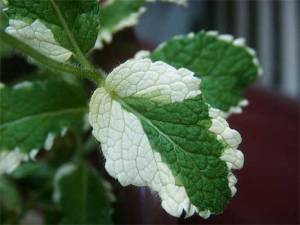Common name: pudina, peppermint,
Botanical name: Mentha arvensis L.
MINT – THE PLANT OF HAPPINESS
By DR CHEW BOON HOCK
Ruffling the leaves of the mint as you walk pass the mint patch in the garden will immediately fill the air with a refreshing, invigorating and unmistakable aroma of menthol. ”It rejoices the heart of man”, wrote the herbalist John Gerard in the 16th century.
The French calls mint ”the plant of happiness”. The Roman scholar Pliny regarded the very smell of mint as capable of reanimating the spirit.
The Greeks used mint in their temple rites and it was a symbol of hospitality.
Although mint was an important aromatic herb in medieval times, it only became an important medicinal herb in the beginning of the 18th century.
Species
Native to Europe and Asia, mint belongs to the genus Mentha, under the family Labiatae, which is characterised by having square stem. It has more than ten species. They interbreed easily, causing difficulty and confusion in their identification.
The Malaysian species, Mentha arvensis L. or pudina in Malay, is an introduced species from South Europe. It is widely grown in many home gardens and is not found in the wild. The economically important species are the peppermint (M. piperita) and the Japanese mints (M. arvensis var. piperescens). They are the source of the commercially and medicinally important menthol.
It is the menthol that is primarily responsible for this herb’s beneficial effects. Spearmint (M. spicata) does not contain menthol and is used only for flavour.
Medicinal Uses
In ancient times, the Greeks used this herb to clear the voice, cure hiccups and poisonous stings. It is now commonly used as a home remedy for indigestion, flatulence and colic. The menthol in mint promotes digestion by stimulating the flow of bile to the stomach. It also calms the muscles of the digestive system to relieve stomach upsets. So don’t say no to afterdinner mints. Chewing a few fresh mint leaves will get rid of stale breath. The antispasmodic effect of menthol may help to relieve menstrual cramps as well.
Drink mint tea (tisane) to treat colds, headaches, diarrhoea, heartburn, nausea and stomachache. An infusion of a few sprigs of mint makes a strong astringent. A mint bath is invigorating.
Culinary Uses
In the kitchen, mint is a strong flavouring and lends its distinct taste to many local food, especially Penang laksa, so too many Thai and Vietnamese dishes. A sprig of refreshing mint in curries and sambals helps cut through the richness for a more balanced taste experience. The Malays eat mint as ulam together with sambal belacan or kelapa and udang.
Consuming mint raw helps to preserve the invaluable enzymes for vitality and health. The familiar mint sauce served with lamb not only improves its taste but helps in digesting the young meat. The commercial extract of mint – menthol, is used in flavouring candy, gum, other sweets and toothpastes. Mint contains Vitamin B1 (thiamine), Vitamin B2 (riboflavin), carotene, calcium, iron and phosphorus.
How to Plant Mint is one of the easiest herbs to grow in home gardens. It is a rampant grower with fast growing stolons that quickly overwhelm other plants. Grow mint in pots to keep the plant in check. It is an ideal herb garden plant as a moderate-sized pot is sufficient to provide for the whole family. The poor keeping ability of cut mint also makes growing your own desirable.
Types of SoilMint does well in rich, slightly acidic (pH of about 6.5) and well-drained soil. The growing medium consists of three parts soil to one part compost and one part sand. If you don’t like to prepare your own growing medium, potting soil is available in many garden centres.
Types of Pots Depending on the quantity of harvest you required, the size of pots ranges from a minimum diameter of 12cm across, made of plastic or clay, to a size as large as window boxes (60cm in length). Choose pots with many drainage holes as mint likes well-drained soil. You can also line the bottom of the pot with broken bricks or small pebbles before filling up with the growing medium to facilitate drainage.
PropagationUsually by suckers, stolons or cuttings. Cuttings of about 5 inches in length can be easily rooted in moist potting soil or even in water. Plant 4 to 5 rooted cuttings in the 12cm pot to encourage bushy growth.
Growing ConditionMint thrives very well in semi-shade with plenty of moisture. The window sill of the kitchen can be the ideal spot to put your pots. Water twice a day if the weather is dry, otherwise, once a day.
Harvest Mint is normally harvested before it goes into flowering. Frequent cutting is the secret behind the prettiest growing mint. It encourages stems to branch out and makes the plant lush and healthy. It may take 60 days or less to the first harvest. Harvesting should be done at an interval of 30 days. To maintain the ideal growing condition, fertilise with a little organic fertiliser after every harvest.
Pests and DiseasesMint is susceptible to a number of pests and diseases. Spider mites, flea beetle and aphids are common in home gardens. The easiest way is to cut off the affected parts. If the herb was not planted in big patches and raised from the ground level such as on the window sill, the occurrence of these pests is very much subdued. Similarly for diseases, do not over water the plant as too wet an environment provides favourable condition for disease to develop.

